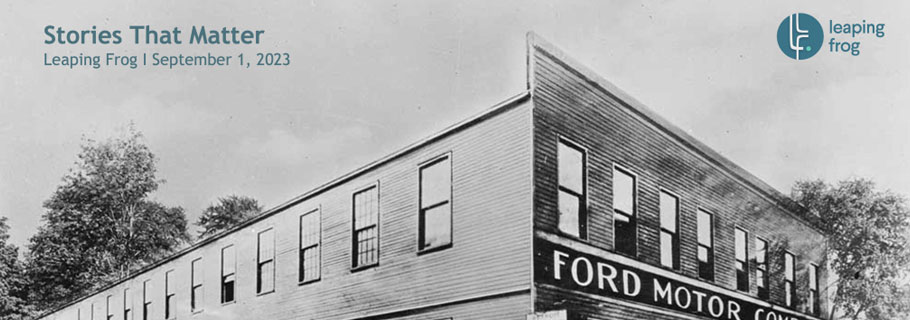
Picture Credit: https://inkbotdesign.com/ford-logo-design/
The concept of “Big, Hairy, Audacious Goals” (BHAGs) gained widespread recognition through the research and writings of Jim Collins and Jerry Porras in their book “Built to Last: Successful Habits of Visionary Companies.” BHAGs refer to ambitious and challenging goals that inspire organisations to achieve remarkable feats beyond their current capabilities. While the term itself may not have a specific origin story, its significance is best understood through real-world examples, such as the transformation of the Ford Motor Company under the leadership of Alan Mulally.
In 2006, when Alan Mulally took over as CEO of Ford, the company faced a daunting set of challenges. Years of declining market share, financial losses, and a lack of innovation had left the iconic automaker in a precarious position. The automotive industry was undergoing significant shifts, and Ford struggled to stay competitive amidst fierce global competition.
Recognising the urgency and magnitude of the situation, Mulally introduced a BHAG that would serve as a rallying cry for the entire organisation: to achieve a 12% profit margin in its North American operations by 2011. This goal was audacious, considering Ford’s financial struggles and the volatile nature of the automotive market.
Mulally’s decision to set such a bold objective was deliberate. He understood that a transformative goal was needed to disrupt the status quo, shake up complacency, and inspire a culture of innovation, collaboration, and accountability. The BHAG became the guiding star that would drive Ford’s turnaround.
Implementing this BHAG required a comprehensive reevaluation of Ford’s operations, business model, and organisational culture. Mulally’s leadership style emphasised transparency, data-driven decision-making, and cross-functional collaboration. He introduced a weekly meeting known as the “Business Plan Review” (BPR) that brought together senior leaders from various departments to discuss progress, challenges, and strategies openly.
The BHAG forced Ford’s leaders and employees to think creatively and make bold decisions. The company underwent a rigorous restructuring to achieve a 12% profit margin. This included focusing on core brands, divesting non-essential businesses, and implementing aggressive cost-cutting measures. The goal became a unifying force, aligning the efforts of everyone in the organisation toward a shared objective.
As the years progressed, Ford’s relentless commitment to its BHAG began to yield tangible results. By 2009, just three years after the goal was set, Ford reported a profit margin of 12.4% in its North American operations. This accomplishment was remarkable, given the company’s struggles and the challenging economic environment.
The success of Ford’s BHAG extended beyond financial metrics. It fostered a culture of accountability, innovation, and continuous improvement. Employees throughout the organisation felt a renewed sense of purpose and pride as they worked together to achieve something that initially seemed impossible.
The story of Ford’s BHAG serves as a testament to the power of visionary leadership and trusting the potential of people through participatory management. It highlights the potential for organisations to achieve transformative results by explicitly expressing ambitious goals and inviting people to become part of a purposeful and meaningful change. It also highlighted setting ambitious objectives that inspire collective effort and drive strategic change.
The concept of BHAGs, as popularised by Jim Collins and Jerry Porras, continues to inspire leaders and organisations to think big, challenge limitations, and strive for extraordinary outcomes.
“Stories That Matter” is a curated series from Leaping Frog, about stories from the yesteryears that have helped shape the modern day practices in the people and organisation domain.
Leaping Frog, a new-age consulting firm, is an enabler and co-creator in enhancing people and organisational effectiveness. We love doing work in the areas of “Driving Organisational Change and Development”, “HR Systems and Talent Strategy”, and “Leadership and Life Coaching”.
Connect and share, for work and more.




